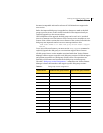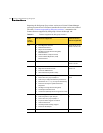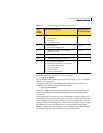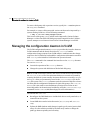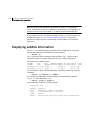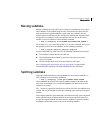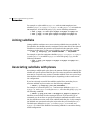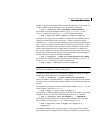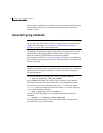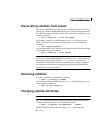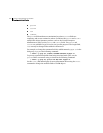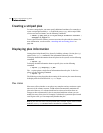
217Creating and administering subdisks
Moving subdisks
Moving subdisks
Moving a subdisk copies the disk space contents of a subdisk onto one or more
other subdisks. If the subdisk being moved is associated with a plex, then the
data stored on the original subdisk is copied to the new subdisks. The old
subdisk is dissociated from the plex, and the new subdisks are associated with
the plex. The association is at the same offset within the plex as the source
subdisk. To move a subdisk, use the following command:
# vxsd [-g diskgroup] mv old_subdisk new_subdisk [new_subdisk ...]
For example, if mydg03 in the disk group, mydg, is to be evacuated, and mydg12
has enough room on two of its subdisks, use the following command:
# vxsd -g mydg mv mydg03-01 mydg12-01 mydg12-02
For the subdisk move to work correctly, the following conditions must be met:
■ The subdisks involved must be the same size.
■ The subdisk being moved must be part of an active plex on an active
(ENABLED) volume.
■ The new subdisk must not be associated with any other plex.
See “Configuring hot-relocation to use only spare disks” on page 390 for
information about manually relocating subdisks after hot-relocation.
Splitting subdisks
Splitting a subdisk divides an existing subdisk into two separate subdisks. To
split a subdisk, use the following command:
# vxsd [-g diskgroup] –s size split subdisk newsd1 newsd2
where subdisk is the name of the original subdisk, newsd1 is the name of the
first of the two subdisks to be created and newsd2 is the name of the second
subdisk to be created.
The -s option is required to specify the size of the first of the two subdisks to be
created. The second subdisk occupies the remaining space used by the original
subdisk.
If the original subdisk is associated with a plex before the task, upon completion
of the split, both of the resulting subdisks are associated with the same plex.
To split the original subdisk into more than two subdisks, repeat the previous
command as many times as necessary on the resulting subdisks.



